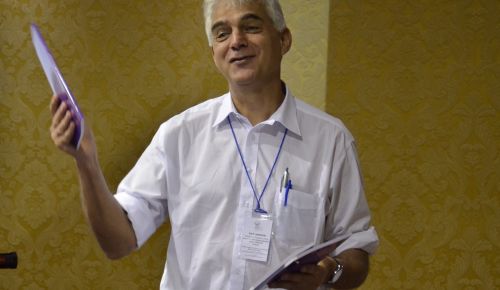In using this valuable framework, however, we should avoid the pessimistic path of simply mapping deficits against high ideals.
When looking at a contemporary situation however, it is also useful to compare it with the past. Because although realities often disappoint earlier hopes, in the longer term there has still been relative progress.
It is also useful to look not only backwards, but also sideways, and see how the current record compares to other countries around the world.
Such an approach is a fitting match to the holistic character of the actual concept of Media Integrity.
This innovative concept, presented in the report, points to the interdependences between the levels of policy, ownership, finances, public service broadcasting, and journalistic practice.
For each area, a number of specific risks to integrity are identified, and these serve as indicators for assessing the extent of corruption as the opposite of integrity.
Seen from an international comparative point of view, the following points can be made:
* The standards being presented for media integrity are very high. The result is that worldwide, it would be very hard to find a state that comes close to meeting them all. Many countries would score much worse than those in the study – for instance, on the existence and integrity of public service media.
* Some countries have higher corruption in journalistic practice, which is partly a function of the bulk of journalists being either desperate freelancers or semi-paid employees who make their living by compromising the integrity of news.
* On the other hand, some countries would score well thanks to the existence of a large volunteer base for journalism as in community radio or a blogging community, where neither salaries nor bribes are part of the business model.
Insight into the MIM study can also be gained by assessing international experiences that could enhance understanding of Media Integrity as a concept. Thus, media issues in Latin America, Africa and Asia highlight that many integrity indicators may introduce tensions for another. For example:
* Regulating ownership may be a condition for countering political monopoly and enhance pluralism. But this can also open a door to simply allocating broadcast licenses to a different political grouping.
* Enforcing a strict media policy to limit concentration of owners, can impact negatively on media institutions that are already operating on very fragile economic lines.
* Requiring transparency of media ownership in contexts without press freedom could discourage independent or alternative investment s in the sector.
Still, notwithstanding the complications, the concept of Media Integrity has strong aspirational power. As such, the concept could in time become an influential normative standard, and again international experiences can help suggest how:
* To develop public demand for media integrity, there are strong possibilities to work with teachers and education departments in order to institutionalise
Media and Information Literacy curricula within schools, as is happening in many countries.
These sample points highlight that Media Integrity is a concept that can be enriched by international experiences. At the same time, that it is also one that has great relevance to countries beyond the current MIM study.
What emerges most of all is that the concept can be a living and evolving one.
In using this valuable framework, however, we should avoid the pessimistic path of simply mapping deficits against high ideals. The real deal should be examining trends over time, to measure evolving strengths, and to celebrate when the glass is filling up, rather than emptying.
Guy Berger is Director for Freedom of Expression and Media Development, UNESCO. The views expressed in this article do not necessarily reflect those of the Organisation.

